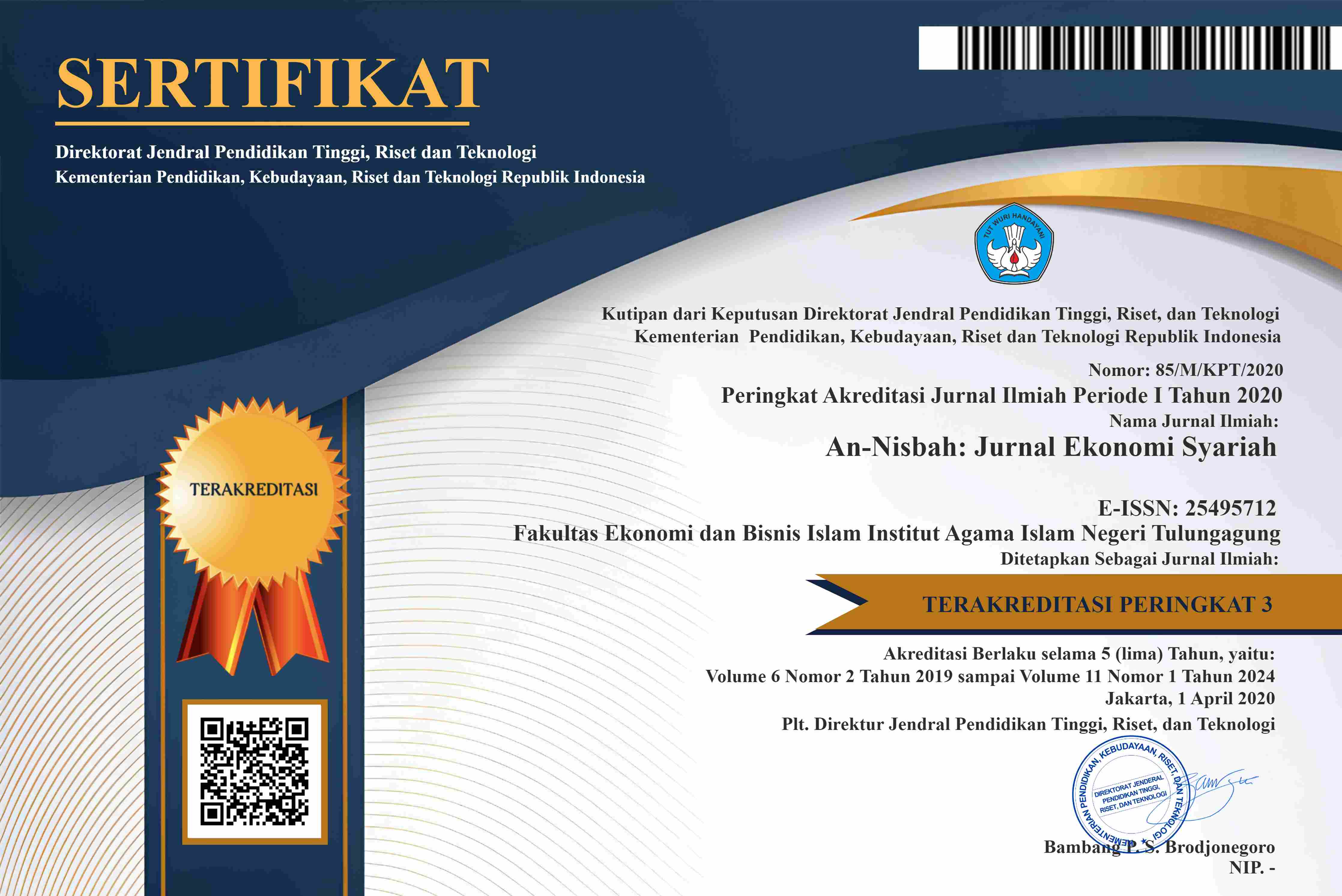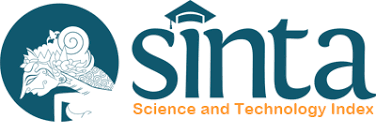PERFORMANCE ANALYSIS OF WAQF INSTITUTION USING BALANCED SCORECARD ANALYSIS: CASE STUDY AT LAZNAS YATIM MANDIRI
Abstract
This research aims to measure the performance of the waqf institution (LAZNAS Yatim Mandiri) using a balanced scorecard (BSC). This study uses quantitative and qualitative analysis or mixed-method by using a balanced scorecard (BSC). The Balanced Scorecard is used to measure performance from both a financial perspective and a non-financial perspective, which includes four main perspectives: (1) finance, (2) customers, (3) internal business processes, and (4) learning and growth. The study found that an overall BSC score of 85,6% shows that the performance of LAZNAS Yatim Mandiri is categorized as very good. From each perspective, customer perspective is the highest BSC score, followed by financial perspective and internal business while learning and growth perspective gain the lowest score. The BSC suggests a direction of priority to improve each strategic goal of perspective. Customer satisfaction becomes the first place, followed by waqf collection and distribution as the second priority. The next priority is employee satisfaction while keeping other strategic goals to be maintained. The findings of this study could help Islamic philanthropic institutions define their vision and strategy, as well as change their vision and strategy into specific activities, by implementing measures that are accurate and comprehensive, as well as providing information that is accurate and correct for managers to make business decisions.
Downloads
References
Al Arif, M. N. R. (2010). Potensi Wakaf Uang Serta Dampaknya Terhadap Perekonomian. Jurnal Dialog Balitbang Kemenag RI, 70, 14-23.
Al Haq, M. A., & Wahab, N. A. (2021). Towards Asnafs' Islamic Self-Actualization Process Through Sustainable Balance Scorecard (BSC) Approach: A Theoretical Proposition. In Handbook of Research on Islamic Social Finance and Economic Recovery After a Global Health Crisis (pp. 85-106). IGI Global.
Creswell, J. K. (2016). Research Design Pendekatan Kualitatif, Kuantitatif, dan mixed. Yogyakarta: Pustaka Pelajar.
Dikuraisyin, B. (2020). Manajemen Aset Wakaf Berbasis Kearifan Lokal Dengan Pendekatan Sosio-Ekonomi di Lembaga Wakaf Sabilillah Malang. ZISWAF: Jurnal Zakat Dan Wakaf, 7(2), 100-117.
Febriandika, N. R. (2020). The Effect of Distributive Justice, Procedural Justice of Compensation and Emotional Intelligence on Affective Commitments. Jurnal Ilmiah Ekonomi Islam, 6(1), 34-41.
Ghozali, Imam. (2009). Aplikasi Analisis Multivariate dengan Program SPSS, Edisi keempat. Semarang: Badan penerbit universitas diponegoro.
Hasen, & Mewon. (2005). Management Accounting. Jakarta: Salemba Empat.
Ihsan, H., Hameed, S., & Ibrahim, M. (2011). Waqf Accounting and Management in Indonesia Waqf Institutions: The Cases Of Two Waqf Foundations. International Journal of Management, Accounting, and Economics, 5(9), 1-16.
Jentoft, N., & Olsen, T. S. (2019). Against the flow in data collection: How data triangulation combined with a 'slow interview technique enriches data. Qualitative Social Work, 18(2), 179-193.
Kaplan, R. S., & Norton, D. P. (1996). Linking the balanced scorecard to strategy. California management review, 39(1), 53-79.
Lubis, Arfan Ikhsan, dan Sutopo. (2003). Implementasi Konsep Balance Scorecard (BSc) Bagi Small And Medium Business di Indonesia Suatu Tinjauan Teoritis. EKOBIS, 4(1).
Meadows, M., & Pike, M. (2015). Performance management for social enterprises. Systemic Practice and Action Research, 23(2),127–141
Medaline, O. (2018). The Development of "Waqf" on the "Ulayat" Lands in West Sumatera, Indonesia. Journal of Social Science Studies, Micro think Institute, ISSN, 2329-9150.
Noordin, N. H., Haron, S. N., & Kassim, S. (2017). Developing a comprehensive performance measurement system for waqf institutions. International Journal of Social Economics.
Nørreklit, H., & Mitchell, F. (2014). Contemporary issues on the balanced scorecard. Journal of Accounting & Organizational Change, 15(4), 513-534.
Pitchay, A. A., Thaker, M. A. M. T., Mydin, A. A., Azhar, Z., & Latiff, A. R. A. (2018). Cooperative-waqf model: a proposal to develop idle waqf lands in Malaysia. ISRA International Journal of Islamic Finance.
Renz, S. M., Carrington, J. M., & Badger, T. A. (2018). Two strategies for qualitative content analysis: An intramethod approach to triangulation. Qualitative health research, 28(5), 824-831.
Saidin, A., Bustamam, K. S., Adanan, S. A., & Abd Samad, K. (2017). Formulating A Performance Measurement System using Balanced Score Card in Islamic Philanthropy Institutions. In SHS Web of Conferences (Vol. 36, p. 00023). EDP Sciences.
Sani, A., Saidin, A., Adanan, S. A., & Bustamam, K. S. (2019). Performance measurement system using balanced score card: a case study in Pusat Zakat Melaka, Malaysia/A'ieshah Abdullah Sani...[et. al]. Journal of Islamic Philanthropy & Social Finance, 1(1), 15-29.
Sharma, A. (2009). Implementing balance scorecard for performance measurement. ICFAI Journal of Business Strategy, 6(1), 7-16.
Shukor, S. A., Anwar, I. F., Sabri, H., & Aziz, S. A. (2017). Waqif Satisfaction: Antecedents and Consequences. Advanced Science Letters, 23(5), 4852-4855.
Wu, S. I., & Hung, J. M. (2007). The performance measurement of cause-related marketing by balance scorecard. Total Quality Management & Business Excellence, 18(7), 771-791.
Yuwono, Sukarno S., & Ikhsan M., (2006), “Petunjuk Praktis Penyusunan Balanced Scorecard Menuju Organisasi yang Berfoukus pada Strategi”. Jakarta: PT Gramedia Pustaka Utama.
The author has full rights to the articles that has been sent to An-Nisbah: Jurnal Ekonomi Syariah. The author is responsible for the originality of the articles and all the references used in the journal script.








